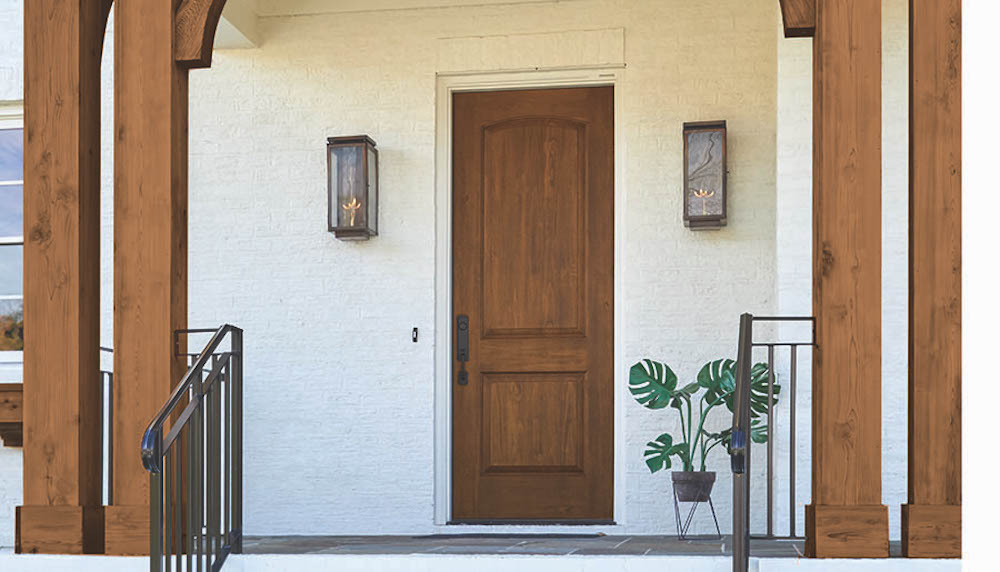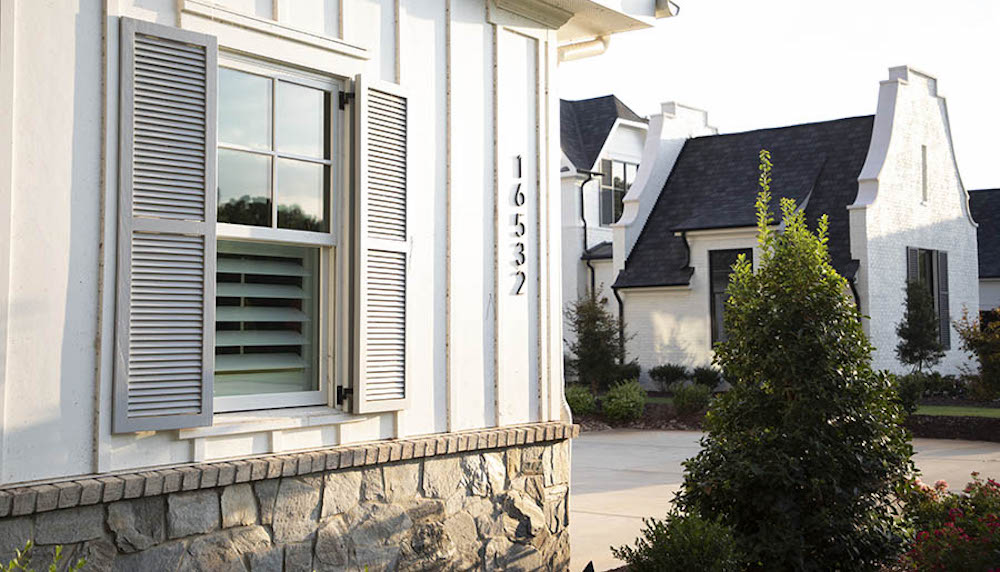A regular inspection of your exterior doors can help prevent costly damage
It’s important to conduct regular inspections of your exterior doors. It’s the best way to identify any minor damage that may have occurred during the year. By rooting out the little issues early, you can prevent them from becoming big ones later on.
The first step in installing an exterior door that lasts is choosing one that is made from high-quality materials and is designed to reliably protect you from the elements for years to come. That’s our mission at JELD-WEN: build doors able to withstand all types of weather.
The second step is to conduct regular inspections of your doors. This is important as a means for identifying any minor damage that may have occurred during the year. By rooting out the little issues early, you can prevent them from becoming big ones later on.
Our general recommendation is to inspect your doors once a year. If you live on the coast, it’s actually a good idea to check them once a month just because of the corrosive nature of salt water and ocean air.

Doors play a pivotal role in protecting our homes. Inspecting yours once a year can help ensure they continue to operate as intended.
The truth is, most minor door repairs can be tackled without the assistance of a professional installer or contractor. To help you take care of it on your own, we’ve compiled the top things to include on your inspection checklist. We’ve also addressed how to inspect them on your JELD-WEN doors and how to make small repairs if you need to.
1. Gutters and overhangs
One of your door’s most important jobs is keeping your interior dry. Gutters play an important part in that goal by directing excess water away from your home.
When you check your gutters, do you see any cracking, sagging, or bowing? If yes, then it’s time to repair them to prevent water from damaging your foundation, doors, windows, or roof. If your gutters are in good shape, make sure that they’re also clear of debris. You want to do this once a year or as often as necessary to prevent water from collecting around your windows and doors.

Check your entry door slab and frame once a year (monthly in coastal areas) for warping, cracking, scratches, and dents.
2. Slab and frame
Next up are your slab and frame. The slab of your JELD-WEN door is the foundation of the door system. The stiles and rails are the vertical and horizontal pieces that make up a door slab. The door frame represents the entire framework supporting the door, including the sill, jamb, and head.
As we noted earlier, you really want to evaluate these once a year (or monthly if you’re in a coastal area). During your inspection of the stiles and rails, look for:
- Excessive warping
- Cracking
- Splitting in wood or fiberglass surfaces
- Dents or scratches in metal surfaces
Scratches and cracks
If you see scratches and/or cracks, repair them immediately. If your finish is fading, cracking, splitting, or peeling, refinish the surface to help restore the protective layer and refresh the overall look of your door.
Damage
Now what about damage to your slab, frame, stiles, or rails beyond scratches or dents? Start by looking for any crooked panels or mullions. Any compromised areas can be repaired by gently tapping with a wood block and rubber mallet until straight.
Light lines
Shrinkage can cause the panels to develop “light lines.” Lightly touch these up with a matching finish. For the best results, allow the door to “condition” in a warm, dry environment for at least 24 hours before reinstalling it.

If you’ve got glass inserts in your door, include an inspection for cracks on your regular door checklist.
Cracked glass
Now check any of the glass inserts you might have in your door. If you find cracks, you’ll need to replace the glass. Note that after-market tints and films are not recommended on inserts in any JELD-WEN glass exterior doors as they can cause damage to the glass and/or sealant.
Moisture or fogging
For insulating glass units, look for moisture or fogging between glass panes. An inspection for these issues is best done on cold mornings. Any moisture or fogging that you find may be a sign of seal failure. To learn more about how to determine if your seal is failing, read our Seal Failure Guide here.
3. Weatherstrip and sweep
One of the best guards against water leakage and energy loss is ensuring you have an effective weatherstrip. It plays a vital role in keeping water out of the door structure and out of your home. So make a point of inspecting and maintaining this feature to help avoid costly structural damage from air and/or water infiltration.
For your weatherstrip, you want to determine if it has gaps; is torn, cracked, brittle, discolored, or gummy; or lacks “bounce back” when pressed down. Keep the following precautions in mind when inspecting your weatherstrip and sweep (i.e., the flexible seal material attached to the bottom of the door slab):
- Solvents such as mineral spirits or petroleum-based products may damage or dissolve the weatherstrip.
- When using alcohol, always test products on a small area first to avoid product damage.
- Do not allow solvents or silicone to touch surfaces around the weatherstrip.
- Do not use abrasives, sanders, or anything sharp near the weatherstrip.
Performing a weatherstrip repair
If you find that the weatherstrip is loose or falling out of the kerf (i.e., the thin saw cut that accepts the weatherstripping fin), follow these steps:
- Carefully remove the weatherstrip.
- Apply a thin bead of silicone sealant into the kerf.
- Hold in place with tape for 24 hours.
- Carefully remove the tape.
Inspecting the sweep
Look for tears and missing components in the sweep. If it’s damaged, consider replacing it to prevent water from seeping into the structure. View our product guide for replacement instructions.
How it should work
When your door is closed, the sweep should be compressed by the bottom component of the door system (i.e., the threshold) by approximately 1/8″. If the threshold has screws visible on the top, you can lower it by turning the screws clockwise or raise it by turning them counterclockwise. You want the threshold to apply uniform pressure along the sweep.
Assessing the foam wedges
What are foam wedges? These should be installed at each lower corner where the door slab sits when it’s closed. They help provide a uniform seal when the door is closed. If a foam wedge is torn or missing, call us for a replacement.
Protecting your door protects your home
At JELD-WEN, we talk a lot about the delights of bringing the outside in. But some elements are best left outside. For that reason, it’s a good idea to regularly evaluate your exterior doors to make sure they’re working properly. If you find it’s time for an upgrade or you have other door questions, JELD-WEN is here to help.
Protect your home with JELD-WEN exterior doors.



